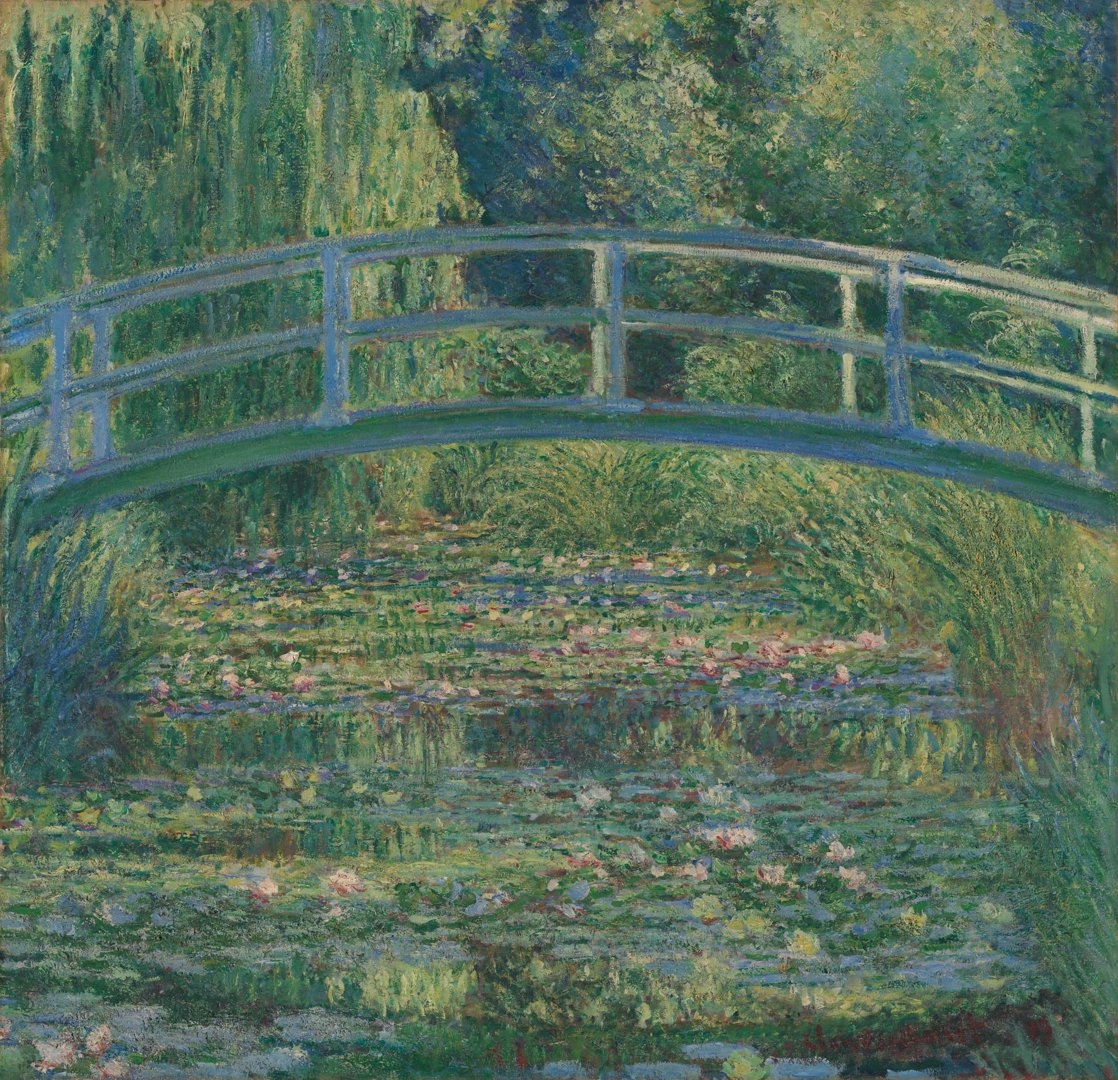Claude Monet's 'The Water-Lily Pond'
Audio description
This is a description of The Water-Lily Pond by Claude Monet. It was painted in 1899 and is one in a series of paintings that Monet made of his garden in Giverny. The relatively small work is just under a metre square and executed in colourful oil paint. It depicts a Japanese-style bridge that Monet had built over his lily pond. The arched footbridge is centrally placed and spans the width of the painting. Above the bridge, the upper part of the painting is filled with distant trees, including weeping willows, that surround the pond. The foreground is filled with water lilies blooming between up thrusting reedbeds. This vibrant and lush painting is saturated with dense plant life. It is composed in a bright colour palette of verdant greens and yellows with lavender blue and purple hues - punctuated with spots of red and pink. The footbridge was constructed by Monet in his purpose-built water garden and was inspired by Japanese woodcuts from his collection. It’s delicate and graceful, gently curving bridge is executed in vibrant blue and green brushstrokes and is the focal point of the painting. The bridge spans the width of the canvas but is cut off at the edges so that it seems to float unanchored above the water, its shape reflected in a dark arc at the bottom of the picture. Monet and his fellow Impressionists had a knack for applying colour in unexpected ways but making them look and feel entirely natural. Here, Monet gives the impression of a wooden bridge caught in the filtered
summer sunlight reflecting from the pond’s surface. However, the bridge’s original colour is no longer part of the visual equation. Monet has painted the drooping soft green willow trees with long vertical brushstrokes, and where the water’s surface appears below, he repeats this technique to show their watery reflection. The reflections in the water are a testament to Monet's keen observation of light and its ever-changing qualities. Below the bridge, broken brushstrokes and daubs of colour illustrate the crowded surface of the water: the dusky pinks and cornflower blues of the blossoming lilies breaking through the dominant greens. The water lilies, in various stages of bloom, float delicately upon the pond's surface. The picture immerses the viewer in the feeling of a summer’s afternoon, sitting lazily by the shaded water’s edge. Even in the midst of winter the painting can conjure the warmth of the sun, the rippling surface of the water, the smell of plants and flowers, and the gentle wind stirring the trees. Monet was a keen gardener. He constructed this bridge at the neck of the pond in 1895 and started painting it that same year. The art critic Maurice Guillemot visited the garden in 1898, poetically describing “the calm and the silence of the dead water reflecting the extensive efflorescence; the colours are imprecise, deliciously nuanced, with the delicacy of dream.” One can understand why Monet wanted to paint
his garden, as he did in about 250 canvases. In each painting he plays with subtle differences in light, colour, time of day, weather, and point of view. Sometimes, he placed his easel directly on the bridge, allowing a close view of the waterlilies blossoming below. At other times he painted from a boat in the pond, which might be the case here. In relation to his pond, Monet explained that the water flowers are far from being the whole scene; really, they are just the accompaniment. The essence of the motif is the mirror of water whose appearance alters at every moment, thanks to the patches of sky that reflected in it and which gives it light and movement.’ In this painting, the density of the reflected vegetation and the bed of waterlilies barely reveals any patches of sky. Increasingly, Monet’s paintings of the pond would gain almost abstract qualities, but this version of 1899 still feels anchored in perceivable reality.


